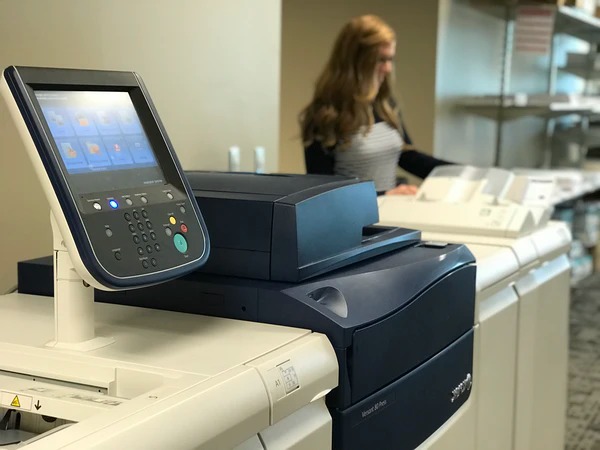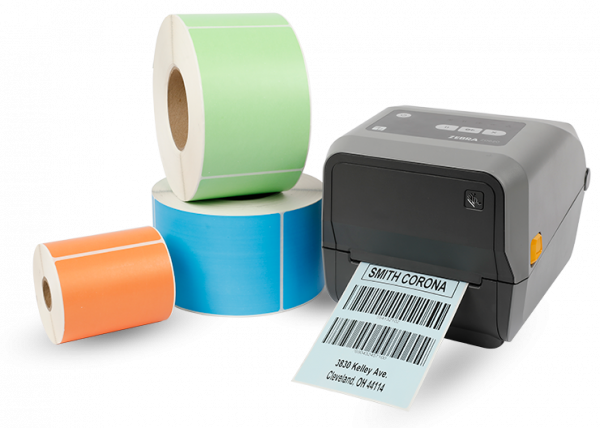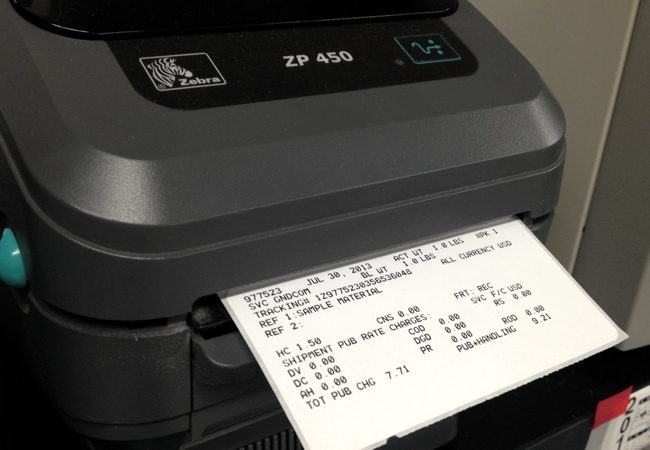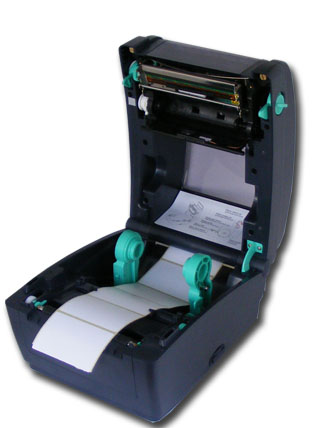44 do thermal labels fade
Most Common Thermal Printer Faults and How to Resolve Them - Soabar Creating long-lasting, high quality labels, thermal printers are a great choice. However, if your print quality is going down or you are printing incomplete labels, your printer could be experiencing a common printer fault. The five most common thermal printer faults are: 1. A build up of dirt The Pros & Cons Of Direct Thermal Printing | Cut Sheet Labels Thermal labels can also start to fade after a prolonged period of time, even if it is not exposed to sunlight. Hence, using them to label boxes that will be stored in your inventory for years isn't a good idea. Depending on the changes in the market environment, labels that have undergone the direct thermal printing method may cost slightly ...
How long do thermal print outs last before they become unreadable? Just load the labels and go. The primary benefit is an overall lower cost since a ribbon is not required. Cons - The printing is not as crisp as that of thermal transfer application and there is a much shorter shelf life to the printed label. After a period of 6 months the barcode will start to fade and the label will start to blacken.

Do thermal labels fade
Thermal Labels vs Direct Thermal Labels - What Are They Really? - Print ... Direct thermal, on the other hand, is when the ink is directly applied to the label (minus the heating ribbon). This method works equally as well in practice, however in comparison to its non-Direct Thermal counterpart, the finished product sometimes has less durability and can fade or rub off over time/usage. When are each label used? Should you choose direct thermal print or thermal transfer labels for ... Beyond 6 months, direct transfer print will turn yellow, and the print will fade to grey because the print contrast in direct thermal systems is not as good as thermal transfer systems. Bottom line: if your product has to last longer than 6 months on a shelf, you're risking label legibility. Thermal Transfer vs. Direct Thermal Label Printing - Lowry Solutions Direct thermal printing doesn't use ink, toner, or ribbon; instead, it creates an image directly on printed material. Direct thermal materials offer a shorter life than thermal transfer and may fade over time. They're usable for basic labeling applications such as shipping labels, where labels only need short-term durability and scannability.
Do thermal labels fade. How do I keep thermal labels from fading? - Lifehacks Stack Exchange Thermal images fade. They are not archival. Treating them for permanence is an exercise in futility. Rather than all that ridiculous amount of effort to save a thermal image, my HACK is to make a photocopy (with carbon-based toner) that does not fade. Top 19 Best Thermal Label Printers of 2022 | Buyer's Guide 19. Seiko Instruments 620 - Versatile Small Label Printer. The Seiko Instruments Smart Label Printer 620 is a compact and inexpensive printer that creates labels up to 1.9 inches wide. This makes it ideal for printing wristband labels or other tiny labels, like address, name tag, and file folder labels. Difference Between Direct Thermal and Thermal Transfer Printing While there are many upsides to using a direct thermal printer, users should be aware of some constraints. Firstly, that the printed area will fade over time. Because the paper is heat-sensitive, additional heat or excessive light could cause the entire paper to darken. This could make the text unreadable and the barcodes unscannable. Thermal Transfer Labels | Labels By Type - Dasco Label You do need a ribbon and a thermal transfer compatible label/printer. Thermal transfer labels have the ability for color printing, won't fade over time, are extremely durable and are the recommended choice for labels that need to last longer than six months. They are recommended for labels that have high-contact use, need to withstand chemicals ...
What Are Direct Thermal Labels? | Label Buying Guide | Technicode, Inc. Direct thermal labels are not suitable for long-term labeling applications since they will fade over time. For such applications, thermal transfer labels are the better solution. These labels are created using the thermal transfer printing method, which uses a printer ribbon and heat to create the desired image on the label material. Direct Thermal Labels - Magpie Labels Direct thermal labels do not use a ribbon. Instead the label surface is coated with a heat reactive layer which turns black when in contact with the heat from the printhead. This heat reactive surface will effectively cause the print to fade when exposed to sunlight, strong artificial light or indeed friction (cartons rubbing together in ... How Does Thermal Printer Technology Work? - Label Printers This option uses a special type of print medium (normally called thermal paper) that is treated with a chemical that makes it react to heat. Whenever heat is applied to the material, the area will darken, which is how the print is formed. You will commonly see this type of thermal printer used for shipping labels, receipts, barcodes, and more. Thermal Printers: Direct Thermal vs. Thermal Transfer Labels Due to the nature of the material treatments, thermal transfer printing is generally durable. Labels can last six months or more and do not fade over time. Typically, the label rolls are even available in weatherproof variations. Generally, thermal transfer printing offers greater material compatibility as well.
Direct Thermal vs Thermal Transfer Labels - Barcode Blog Because it uses heat-sensitive materials, direct thermal labels do not have a long shelf-life, usually lasting around six to eight months. They have a tendency to scratch easily, and overexposure to direct sunlight or high temperatures will cause the print to fade faster. Simple to load and operate Low maintenance Thermal Transfer Label Printers and How They Work Durable and fade proof - Up against traditional ink-on-paper and direct thermal labels, thermal transfer labels are more durable and fade resistant. Superior barcodes - If you're printing barcodes, you need to rely on them to actually be readable. Do Thermal Printed Labels Fade? - Gorilla Output Thermal print labels fade because of print material degradation, abrasion, sunlight exposure, contact with chemicals, and improper storage, among many other possible reasons. And even in the absence of these factors, most thermal prints will eventually fade. They are generally not built to last forever. Direct Thermal vs. Thermal Transfer Labels - Graphic Tickets Disadvantages of Direct Thermal Labels. Direct thermal labels are Monochrome: They cannot print colored images like those used for color-coding. Fading: These heat-sensitive labels fade when exposed to continuous sunlight or heat. Little scratch resistance: Thermal direct labels wear off when you scar them. Disadvantages of Thermal Transfer Labels
How Long Do Thermal Labels Last? - Gorilla Output To do this, place the thermal label on any hard surface. Then run a hard object or your fingernail across it in a back and forth movement. This test creates a black scratch on direct thermal labels but does not affect thermal transfer labels.
Make It Last: Use Thermal Transfer! - The Label Experts The disadvantage is that the image degrades over time, so direct thermal (DT) labels are primarily used for short-term use. DT labels will fade or brown with age and will even turn black if exposed to heat or strong sunlight. (Ask any disappointed mother who wanted to keep her baby's sonogram image in a baby book forever!)
What are Thermal Labels? | Zebra Thermal labels use heat to create an image. Thermal transfer uses a thermal ribbon where heat from the printhead releases the ribbon attaching it to the label surface. Direct thermal images are created when heat from the printhead causes components on the label surface to mix causing them to (usually) turn black. A label is a label right? Wrong.

What Are the Differences Between the Direct Thermal Labels and the Thermal Transfer Ones? - Hype....
Why does prints taken by thermal printers fade away after few days? The receipts fade because retailers use thermal paper. Thermal paper has a special coat which allows it to be used in thermal printers. Thermal printers are faster than other printers and the images are sharper and clearer, especially when the font is going to be tiny. This is also why the medical industry used it to print ECG reports.
Today I learned that you don't put tape over Thermal Labels I don't usually tape over my thermal labels but decided to test mine. I tested my "usa made" labels with both tapes I use and they did indeed fade somewhat over a day or so. I tested the regular duck brand tape and the hp 260 tapes. Both seem to cause a similar amount of fading. The area underneath is both lighter in color and starting to blur. 1

Food Private Storage Preparations Name Labels Soluble Shelf Life Copperplate Label Sticker - Buy ...
Labels print beautifully but fade quickly - OnlineLabels Labels print beautifully but fade quickly. I have used White Gloss Labels for inkjet for my jar products and Weatherproof Gloss Inkjet Labels for my lotions, shampoos, etc. for almost 10 years now. I have a Canon Inkjet MG6620 and a Canon Inkjet IP4920. I run both these labels on the setting of "Glossy Photo Paper" because it seems to give me ...
Receipt Paper: Why It Fades and How to Restore It? Restoring a faded thermal paper is quite simple. Here are 3 ways to do so. 1. Scan and digitally restore it. Assuming that the paper's surface is still white (not yellowish, brownish or blackish), scan the receipt just as you would a colored photo.
How to Keep Thermal Paper from Fading? | Panda Paper Roll Paper and fire do not mix. It is a hazard to have thermal rolls in the kitchen. If they catch fire, you will end up losing the paper and the entire building. The heat in the cooking place is also another reason why you should not have thermal rolls inside your kitchen. Heat makes the colors fade out, and you will be left with black or gray ...
All About Thermal Labels: Direct Thermal vs. Thermal Transfer But thermal transfer printing has the added benefit of color and increased durability. These two characteristics make it a good choice for low-volume and on-demand applications. As opposed to direct thermal printing, thermal transfer printing: Produces long-lasting, archival-quality labels. Resists damage from moisture, heat, and light.
Thermal Transfer vs. Direct Thermal Label Printing - Lowry Solutions Direct thermal printing doesn't use ink, toner, or ribbon; instead, it creates an image directly on printed material. Direct thermal materials offer a shorter life than thermal transfer and may fade over time. They're usable for basic labeling applications such as shipping labels, where labels only need short-term durability and scannability.
Should you choose direct thermal print or thermal transfer labels for ... Beyond 6 months, direct transfer print will turn yellow, and the print will fade to grey because the print contrast in direct thermal systems is not as good as thermal transfer systems. Bottom line: if your product has to last longer than 6 months on a shelf, you're risking label legibility.
Thermal Labels vs Direct Thermal Labels - What Are They Really? - Print ... Direct thermal, on the other hand, is when the ink is directly applied to the label (minus the heating ribbon). This method works equally as well in practice, however in comparison to its non-Direct Thermal counterpart, the finished product sometimes has less durability and can fade or rub off over time/usage. When are each label used?












Post a Comment for "44 do thermal labels fade"